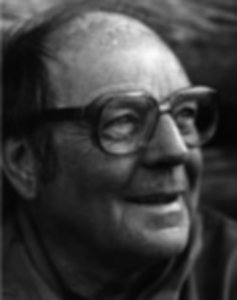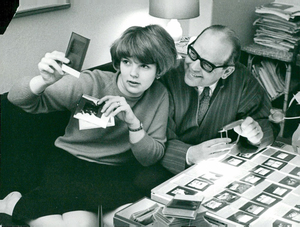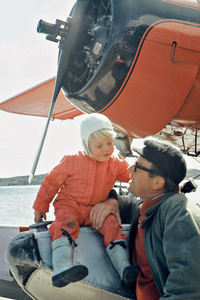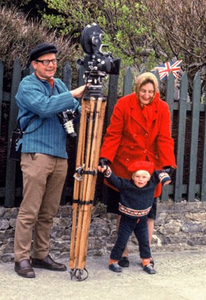GILLSÄTER, SVEN ERIK
1921 - 2001 from Sweden
Swedish photographer, was born on 28 February 1921, at Njutånger, Hälsingland, Sweden, the son of Per Erik Eriksson, farmer and postman, and Svea Eriksson.
He went to high school and to evening school in journalism. He married twice: first to Astrid Bergman in 1950 and second to Harriet Forssell in 1962 and he had two children: Pia (b1950) and Björn (b1966). His career as a freelance photographer took off when he was given a bonus by a Swedish newspaper for his coverage of the 1956 Olympic Games in Melbourne.
He used this money to spend months in the Indonesian jungles covering exotic animals and peoples. The book he published following this stay allowed him to continue travelling, and soon he had visited bear country in Alaska, savannahs in Africa, mountains in the Middle East, and the Galapagos Islands.
He became a prolific producer of television documentaries, at a time when there was only one channel in Sweden. Many of these programmes, as well as his books, were translated into, among other languages, English, German and Russian.
His curious mind tempted Gillsäter to visit places where few Swedes had set foot, and where there was an interesting flora and fauna. In addition to all the various kinds of penguins that live on the Falkland Islands, he was intrigued by the stories of Norwegians who had settled there after the whaling days. He told himself that there must be good reasons beyond escapism to settle in these extremely remote, isolated and wind-blown islands.
In the southern summer of 1968-1969, Gillsäter together with his wife Harriet and two and a half year old son Björn, set off to spend six months in the Falkland Islands. He was contracted by the Swedish Television to do three documentaries about human and animal life on the Islands, which were eventually aired in 1969. This assignment was in many ways the most ambitious project he undertook, both in length of stay and because the whole family was involved.
A base was established in Port Stanley. Burning peat for heating, having penguin eggs for breakfast, and eating mutton for lunch and dinner soon became second nature for the little family. News travels fast in a small community such as the Falklands, and with help from the 'squeaky box' (broadcasting by telephone system) most people soon knew about the exotic visitors.
Small seaplanes took the family all around the Islands, where they were received by the local farmers, plus the thousands of penguins, albatross, sea lions and elephant seals. This was in many ways paradise for Gillsäter. Whenever required, the family spent days in a small blue tent, allowing them to become part of the various animal communities and to document their lives, day and night.
The hospitable yet sometime 'quirky' Islanders opened up their homes and spent hours discussing life on the Islands with the visitors. People in Stanley were also welcoming: Governor Haskard invited the family to the New Year's celebrations; a couple invited them to their wedding; and they took part in the annual horse races.
Gillsäter later visited the Falklands again in 1978 for a week and South Georgia briefly in 1980.
He died in Sweden on 12 October 2001.
Gillsäter published some 25 books, including Pingviner i Vind(Penguins in the Wind),an account of the family's stay in 1968-69. He made numerous television documentaries, including three on the Islands.
Some of his images of Islands life were reproduced (thanks to support from the Shackleton Scholarship Fund) for a photo exhibition at Falkland House in London in 2005, which subsequently travelled to Stanley.
Photographs by Gillsäter.
Comments
Revisions
August 2019 Additional photograph added
July 2020 Two additional photographs added



